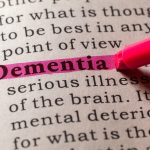
The Vietnam war was a traumatic event in American history, most especially for those who served. However, there’s a glimmer of good news from recent research: Suicide rates for Vietnam veterans over the past four decades were no higher than that of the general population. Still, between 1979 and 2019 — the period covered by the new study — almost 100,000 Vietnam War vets did lose their lives to suicide, the researchers noted. Those tragedies “merit the ongoing attention of health policymakers and mental health professionals,” they said. Suicide has long been a concern among U.S. veterans generally. According to background information in the study, Veterans Administration data for 2022 shows that “although veterans composed only 7.6% of the U.S. population, they accounted for almost 14% of US suicides.” In 2021, VA data showed that suicide accounted for about 32 deaths out of every 100,000 veterans — double the rate of suicide seen among civilians. Did the trauma faced by soldiers in the Vietnam conflict lead to even higher rates of suicide? To find out, Tim Bullman and colleagues at the U.S. Department of Veterans Affairs in Washington, D.C., analyzed health data for over 9.5 million Vietnam veterans. Almost all were men, and close to 2.5 million served directly (were deployed) in Vietnam during the conflict. Tracking rates of suicide between 1979 and 2019, Pullman’s team… read on > read on >



























-300x200.jpg)










